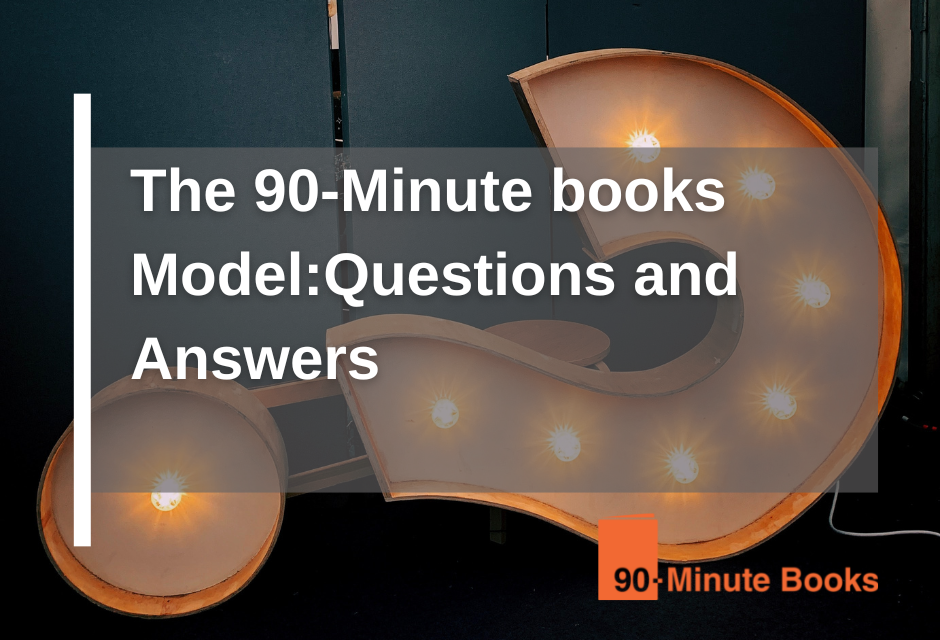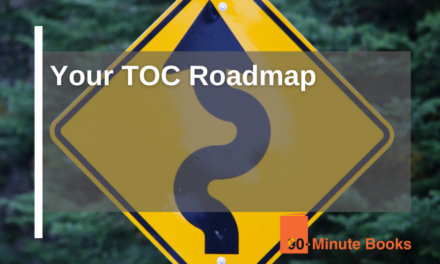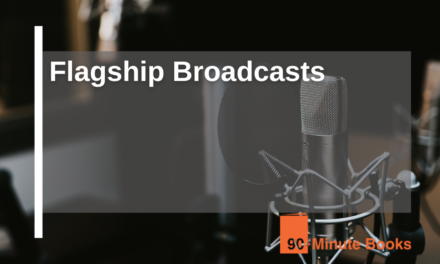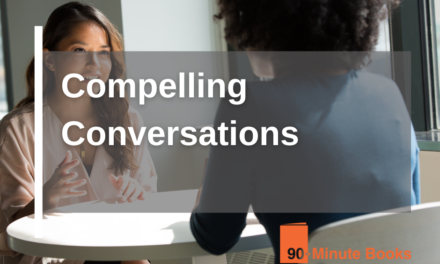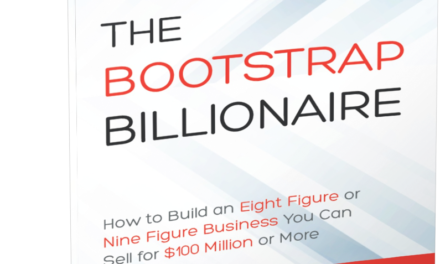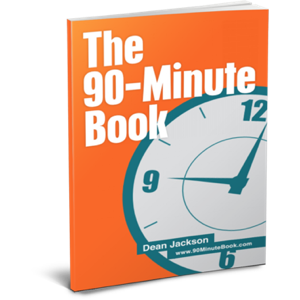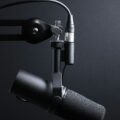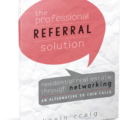In this blog post, we will address the frequently asked questions that have come up over the years concerning the 90-minute book model. If you want to listen to the podcast from which this post draws inspiration, click here.
People often ask how the book-writing process works. Many have heard stories about how daunting writing a book can be. What is done here at 90-minute books is less of writing a book as creating a lead generation tool to help make invisible leads visible. If the book is entertaining, it is a bonus.
What Should My Book Be About?
When the question of size comes up, the counter-question is, ‘what is the objective?
What are you trying to achieve?’ the general aim of the book is to spark conversation, to give something of value to the reader, and to spark further conversation.
The aim of your book can then be to start the conversation, to give something valuable that answers that one question knowing full well that other questions aren’t going to be answered by the book. Then you can start the conversation. Whether or not your book has to be 50 pages or 150 pages may vary on the subject and what you’re trying to achieve, but I think it’s very easy to get carried away with too much content, trying to make it too big. If you’re not very specific about the message or the outcome you’re trying to get to, it can become a little rambling and go around in circles.
Every extra word that you put in the book is another extra word that needs to be edited or considered whether it should be in there in the first place. Then the production costs go up on the book, and the overhead goes up, so generally, it should be as small as possible while relaying its message effectively.
Where do I start?
The trick is in deciding where to start is picking the best audience. At the end of the day, you’re writing a book for a reason. It’s not just to fill some of your own time. The reason, then, should be as specific as possible to achieve that goal. It may be that you’ve got several markets that your business addresses. Maybe you wish to address a concern that many customers have brought up.
Another element to consider might be: Where is the biggest need? Perhaps one group of people asks the most questions. A book would be a great way to engage with that audience that’s already there; thinking about the outcome, thinking about the specific group that you’re trying to target, deciding which group is the most valuable, and which group you can answer the best.
Perhaps it’s a new product or service that you’re trying to launch, and you’re looking for this book to be part of the funnel that guides people toward that new product or service. Rather than thinking of the book as the outcome or the book as the purpose, the book is just a mechanism to achieve that outcome.
Thinking about who you’re trying to target and what they’re most interested in finding out should help you narrow down what the book should be about and where you should start.
Once you’ve decided that, then your other thing that you would need as a check and balance is to make sure that there is enough to write about on that particular subject.
How Big Is Big Enough? I have A Lot I Want To Include
A lot of people want to include images, infographics and charts. Usually, what we say to people is, unless the point you’re trying to make is very technical and detailed and a chart would be a valuable illustration for the point you’re trying to make unless it is the case that supporting information is needed for it to make sense. The suggestion usually is: Rather than put all of that supporting information in the book, why not have it as a follow-up sequence?
I don’t know whether my audience is too big or too small
We talked quite a lot about targeting a single target market, making it as relevant as possible to those people, and not making it too broad because,
firstly, it’s more effective in getting people to raise their hand in the context of a particular funnel. Secondly, writing is easier because you’ve got the self-imposed discipline of being more specific. so the person who reads the book is guaranteed to get value from it
To debate about whether the audience is too big or too small, it comes down to the cost analysis of, “Okay, it’s going to take me 100 units of effort to do this book. Is that audience big enough to make it worthwhile? If the cost analysis checks out, then you should write the book
How Do I Choose A Title?
Someone asked a great question saying, “Recently, I’ve seen a lot of one-word titles, but we often talk about descriptive titles that state a problem. Which is better? To be short or long?” This is an interesting one, and it’s a broader copywriting concept. There was a classic line that’s quoted a lot. It says, “I have made this longer than usual because I have not had time to make it shorter.” What that’s saying is the aim is to be as brief and succinct as possible while still communicating a powerful message.
That isn’t easy to do very quickly. Short titles that hit the mark often result from a lot of thinking and back and forth to dial in. The length and the number of characters in the title don’t matter much. What’s important is the power of the words.
It sounds obvious, but it’s quite often missed. This is the difference in strategy versus tactics. A tactic might be that shorter titles have some power, but a short title alone might not make sense. The strategy would be to have the fewest number of words that deliver the power of the message.
That’s more challenging to get to. At the end of the day, the title aims to get people to pay attention, raise their hands, and start that journey of, “I have a challenge. This will answer that challenge; therefore, I want to request a copy of that.”
If you can do it in a few words, that’s great. We were recently working with Fabienne Fredrickson and started with a slightly longer title but ended up calling the book Leverage.
Now, Leverage hit the nail on the book itself and the funnel through which she was promoting it, so although that was just one word, the power isn’t necessarily in the fact that it was one word; the power was in the fact that it was the right word.
It’s very difficult to say whether it should be longer or shorter. As long as it delivers the power of the message.
What is the benefit to my business?
“What will a book do for my business?” The tagline we use on the website for our work sums it up perfectly. The key is that you can make invisible prospects or invisible leads visible.
Offering someone a compelling piece of information so that they can raise their hands out of interest and allow you to start a conversation is the key to a lot of what we do and one of the big benefits of your business. So, quickly and easily, you can create something that you may not come across otherwise.
A book seems like a very low-threat way of starting that conversation. Both in terms of the individual person who requests it and also to kind of leverage it with other organizations. It might be challenging for you to go to someone, a complimentary non-competing business and say, “Hey, I want you to advertise my business.”
Still, it’s a lot easier to go to them with a book and say, “Hey, I think this book’s going to add value to your customers. I’d love to give you 100 copies for you to give to your clients. Because you’re adding value for them. You’re making it very easy to put your message out there to help you start a conversation with their audience because you’re starting from a position of giving rather than asking.
every once in a while, we will publish a post specifically about the various questions that come through. if you have questions, you can always contact us at https://www.90minutebooks.com/process

